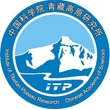Plenary Speakers
Lonnie G. Thompson

Character introduction
Lonnie G. Thompson is a Distinguished University Professor in the School of Earth Sciences and a Senior Research Scientist in the Byrd Polar and Climate Research Center at The Ohio State University. His research has propelled the field of ice core paleoclimatology out of the Polar Regions to the highest tropical and subtropical ice fields. He and the OSU Ice Core Paleoclimate Research Group have developed light-weight solar-powered drilling equipment for acquisition of histories from ice fields in the tropical South American Andes, the Himalayas, and on Kilimanjaro. These paleoclimate histories have advanced our understanding of the coupled nature of Earth’s climate system. Thompson’s research has resulted in major revisions in the field of paleoclimatology, in particular, by demonstrating how tropical regions have undergone significant climate variability, countering an earlier view that higher latitudes dominate climate change. Observations of glacier retreat over the last three decades confirm that glaciers around the world are melting. He has published 238 peer-reviewed papers, led 63 field expeditions and received 73 research grants. He is a member of the National Academy of Sciences and the American Philosophical Society and is an elected Fellow of the American Geophysical Union and the American Association for the Advancement of Science. In 2007 he received the National Medal of Science, the highest honor the U.S. awards to American scientists.
Topic: Rapid Climate Change: Evidence from the Third Pole and Beyond
Abstract Tropical glaciers are highly sensitive indicators and recorders of climate change. Unfortunately, most are currently retreating, primarily due to the recent anthropogenic warming and in some regions such as Peru, strong El Niño events augment the melting by increasing air temperature and decreasing precipitation. The ice-core paleoclimate research program at The Byrd Polar and Research Climate Center, The Ohio State University began in 1974 as an outgrowth of the United States polar ice core drilling initiative. The first tropical ice cap to be drilled to bedrock was Quelccaya in the Andes of southern Peru. This ice core yielded a 1500-year record of regional climatic and environmental variations and provided the first evidence of the occurrence of the Little Ice Age in the Southern Hemisphere Tropics. The innovative lightweight, solar-powered drilling system developed specifically to drill Quelccaya was instrumental in subsequent drilling projects on high-altitude glaciers in the central Andes, the Tibetan Plateau, southeastern Alaska, tropical East Africa and the mountains of Papua, Indonesia. Most of the resulting ice core records extend back many millennia, and several extend back into or through the last glacial cycle. The oldest of these records (>100 ky) is from the Guliya ice cap on the far western Tibetan Plateau, which was drilled in 1992 and again in 2015 with the anticipation of being able to extend its timescale further. Examination of ice core-derived climate records from opposite sides of the Pacific Ocean resulted in the discovery of large-scale teleconnections between the Andes and the Himalaya through processes involving the tropical Pacific atmosphere and sea surface temperatures. Evidence for the greatest historically recorded drought ~4,000 years ago is found in ice cores from the Andes of Peru to the ice fields of Kilimanjaro to the glaciers of the Himalaya. However, these high-altitude tropical glaciers and ice caps are under threat from the warming that has progressed over the last several decades which are documented in 2016 and 2018 ice cores from the Andes of Peru. On regional to global scales the greatest near-term impacts of Earth’s melting low latitude glaciers will be economic, especially in countries that rely on glacial streams for agriculture, hydroelectricity, municipal water supplies, ecosystem support, tourism, and recreation. The loss of these mountain glaciers is also likely to be a “threat multiplier” for growing geopolitical tensions in some regions.
Previous Alexander M. Sergeev
Next Colin Blakemore








